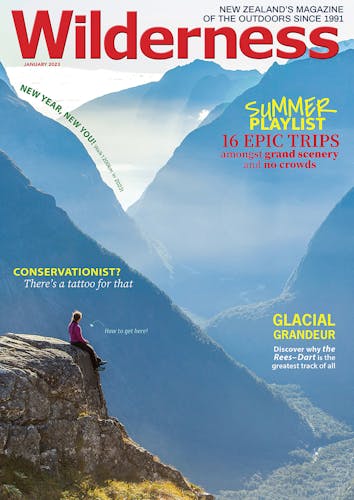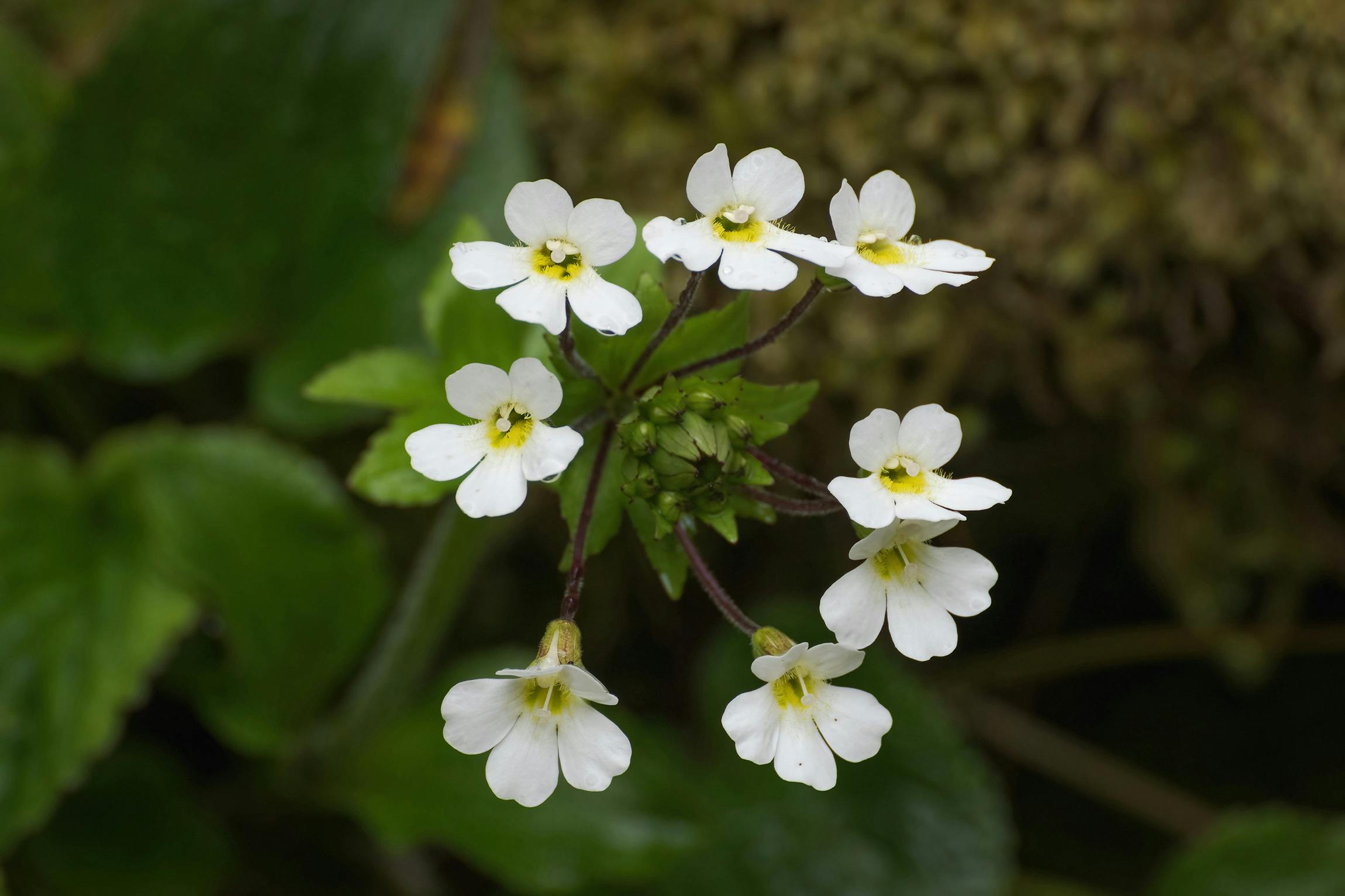Most mountain foxgloves flower from November to February, so now is the best time to get out and see them.
It was spring. The mountain air was warm, the track was before us, and at first our eyes were drawn to the immense form of the volcano above. But more and more we noticed the small flowers brushing our gaiters.
Delicate rosettes of white flowers perched on long stalks and emerging from tightly clustered, leathery dark green leaves. Mountain foxglove.
During five days’ tramping the Around the Mountain track at Taranaki Maunga, this foxglove was an almost constant presence. The prolific plants lined the track, thriving in the moist environment.
Unlike introduced foxgloves, which have large purple or white flowers, our native species are more subtle. The flowers have five lobes, emerging from a yellow-green centre with delicate hairs. When examined closely, these inflorescences are quite exquisite.
According to botanist Alan Mark in his alpine guide, Above the Treeline, our foxgloves belong to a Gondwanan genus (Ourisia) that has 28 species spread between South America and New Zealand, with one in Tasmania. Aotearoa has 11 species, of which nine inhabit the alpine zone.
Most common of the alpine species is Ourisia macrophylla, which is widespread in wetter mountain areas from Te Moehau on the Coromandel Peninsula to South Westland. As the name suggests, it has large leaves, unlike some of the other species. One uncommon species, Ourisia vulcanica, is confined to the Tongariro and Kaimanawa mountains.
One of Ourisia’s main pollinators is a native mountain bee, Lasioglossum maunga. Perhaps these were the small insects we spotted hovering around the flowers.
Most species flower from November through to February. Here are four places to spot mountain foxgloves during your summer tramps.
1. Panitahi / Fanthams Peak Track
Te Papakura o Taranaki
From the Dawson Falls Visitor Centre, this track climbs steadily through forest into the subalpine and alpine zone. During spring and early summer, mountain foxgloves line the track. Allow an hour each way to reach Hooker Shelter, which has excellent views of Taranaki Maunga and Panitahi / Fanthams Peak.
2. Key Summit
Fiordland National Park
This gentle summit, reached from the Routeburn, offers panoramic views of northern Fiordland, a myriad of alpine tarns, and the chance to see many alpine plants on the tramp in. Watch for Ourisia macrophylla on the trackside as you pass through the subalpine zone. For a return trip to Key Summit from The Divide, allow 3–4hr.
3. Ōtira Valley
Arthur’s Pass National Park
Another common species is the creeping mountain foxglove (Ourisia caespitosa). It’ is present in many mountain areas (excepting Taranaki Maunga), reaching as far south as Rakiura. The Ōtira Valley is one of the best and most accessible places to observe creeping mountain foxglove. From the car park a well-graded track leads into the upper Ōtira Valley, reaching a footbridge after about an hour.
4. Sharp Cone
Kaimanawa Forest Park
Reaching the tops is relatively easy on the track that climbs onto the Umukarikari Range, helped by a starting altitude of 700m. Passing through red beech, then mountain beech, the track climbs steadily to emerge at the bushline, where mountain foxgloves can be spotted in the wetter, more sheltered sites beside subalpine shrubs. Higher up are views of the Tongariro volcanoes, and the terrain becomes more barren. A poled route leads to Sharp Cone (1481m). Allow 4.5–6hr for a return trip.








